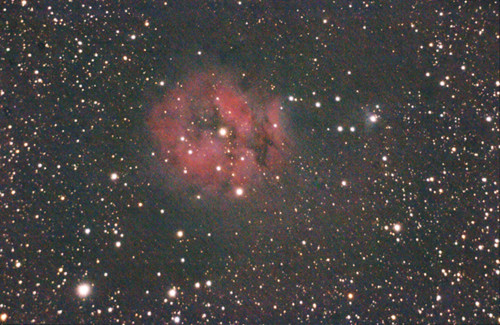Observing Log for Mike Durkin
8/26-27/2017 about 8:00PM-2:00AM
Locust Valley, NY
Transparency: 8/10, Seeing 3/5
Temperature: about 60-75 degrees
Equipment: Celesctron Ultima 8
I wanted to try a "pretty picture" again with my 8 inch. It look me about 3 hours to get the basic gear
set up. Getting polar aligned wasn't too bad, but figuring out the autoguiding pieces and getting
things if focus ate up a lot of time. PHD crashed a couple of times on my Windows laptop. Finding the right
combination of extention pieces for the autoguider was also a big deal. I might have been able to do it
with less extention pieces if I was able to use the DSLR without the tube, but that would bring the camera
body very close to the focuser. Oh yeah, the focuser motor is missing it's nylon screw. I need to pick up
a replacement from Home Depot.
I had originally thought I was going to do the Iris Nebula, but I think that is too close to Polaris and it may
have been too late once I started trying to point to it. So instead I went to the Cocoon Nebula, which is
further south.
I took about 1.5-2 hours worh of images of the nebula, and on initial inspection, I don't like the way the
stars are shaped. A significant number of them are oblong. I don't know if this is a problem with guiding,
focusing, or is it something with the optical system? I should have check collimation before I started.
After processing, I do like the colors that I was able to bring out, but the image seems VERY noisy. Other than the coma I expect from the SCT, the star shapes seemed to be OK.
8/21/2017 about 6:00AM-2:00PM
Casper, WY
Transparency: 6-9/10, Seeing 3/5
Temperature: about 75-85 degrees, maybe 20 degrees lower during eclipse
Equipment: Canon T3i with 75-300mm zoom lens and new zoom (7-21x20)binoculars
The Great American Eclipse of 2017!!
Most of the AOS group decided to use the grass area in front of the hotel. We scoped out an area
next to the Celestron table, and started setting up around 6 AM. Eventually I moved to a slightly
different patch on the same grass field because I was a afriad that the tree would block my photos.
Just before the eclipse started, I saw a hot ait balloon that drifted by.
By the time the eclipse started there was maybe 50-75 people on the field, not quite as much as I
expected, so that was good.
It started nice and clear and I started taking pictures after first contact. There was one string
of sunspots in one area and then a couple of spots near the bottom limb.
As second contact was approaching, some high cirrus clouds started rolling in. The temperature also
started dropping and lighting conditions started getting darker.
30 seconds before totality I took off the filter and tried to take pictures of the Diamond Ring
effect and Baily's Beads. I did manage to get a bot of the Diamond Ring effect, although for the
bright exposures, there was a grid of red dots in the image, possibly an internal reflection from the
sensor chip. I didn't exactly get Baily's Beads although it sort of looks like it in the later shots.
The finally, totality!
It got darker than I expected. The temperature drop was also very noticeable. I started by taking a
series of exposures going from 1/4000s to 4 seconds. The brightest shots were to overexposed to be
useful. It also may have been because of the thin cloud layer.
After that, I took a quick look with the cheap zoom binoculars I got from an ALCON vendor. I was able
to make out some prominences through the binoculars on the top limb. It was cool and weird to be
able to see them without any filter. Then I tried to do another series from 1/3200 going forward,
but totality ended and I had to stop after about 10 shots.
Then I finished up with some more shots until 4th and final contact. THe clouds got significantly
thicker after totality ended, although we were always able to see the sun through the clouds.
After about 3 hours it was all done and I packed up.
A gallery of some of my pictures:
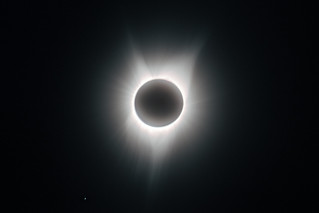
|
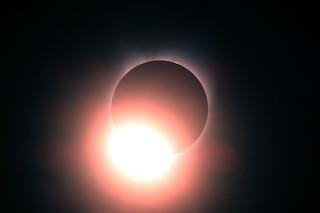
|

|

|
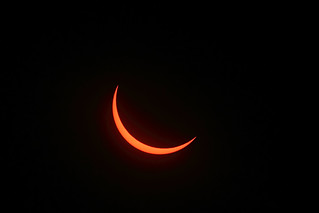
|
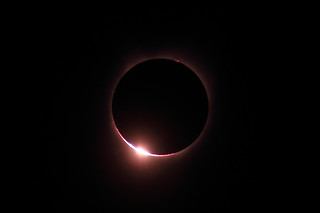
|
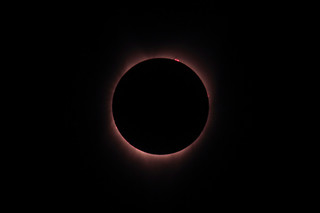
|
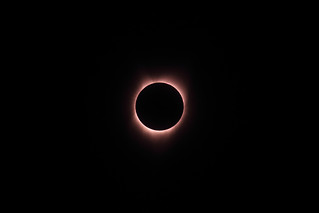
|
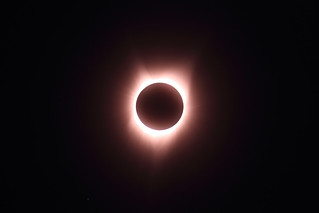
|
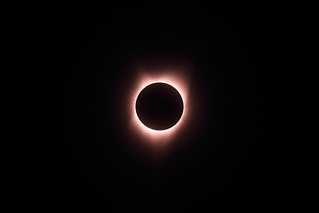
|
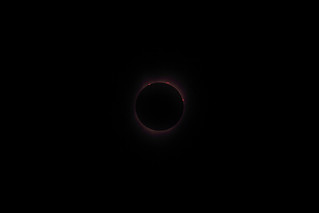
|

|
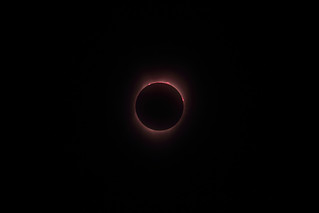
|
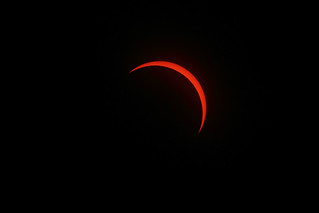
|

|

|
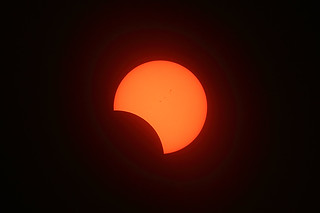
|
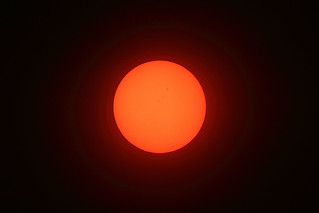
|
And an animated GIF of the eclipse:
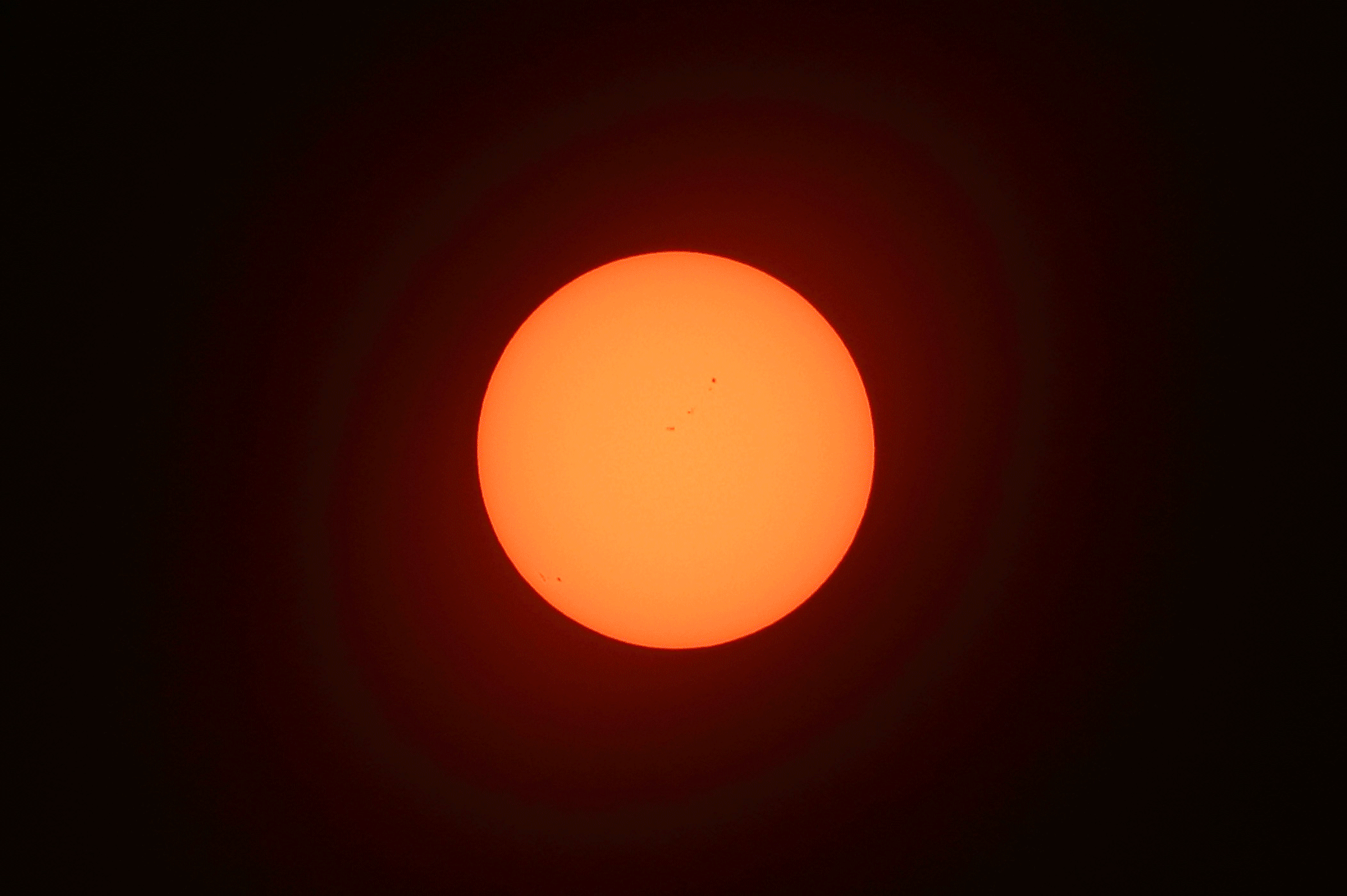
8/5-6/2017 about 11:00PM-12:15AM
Locust Valley, NY
Transparency: 8/10, Seeing 3/5
Temperature: about 65-75 degrees
Equipment: 15x70 binoculars
A nearly full moon, so a lot of things were washed out.
Visual measurements of Z UMA, τ 4 Ser, X Oph and RY Dra.
<-- 2016 Jan Feb Mar Apr May Jun Jul Aug Sep Oct Nov Dec 2018 -->
